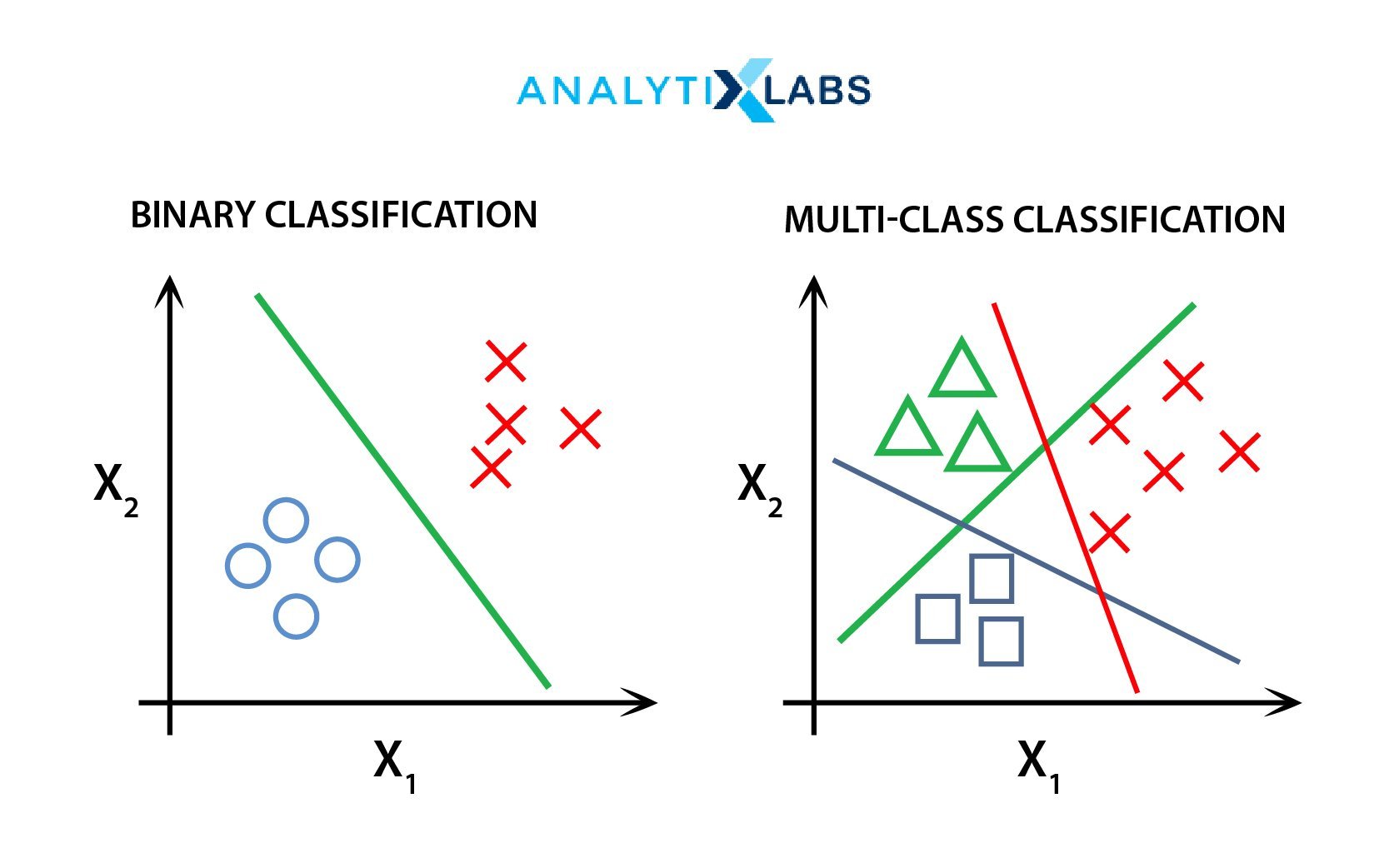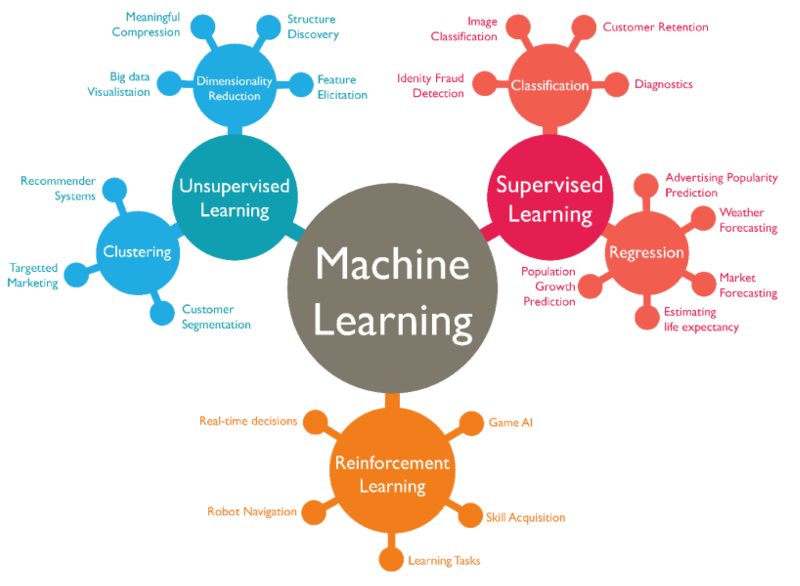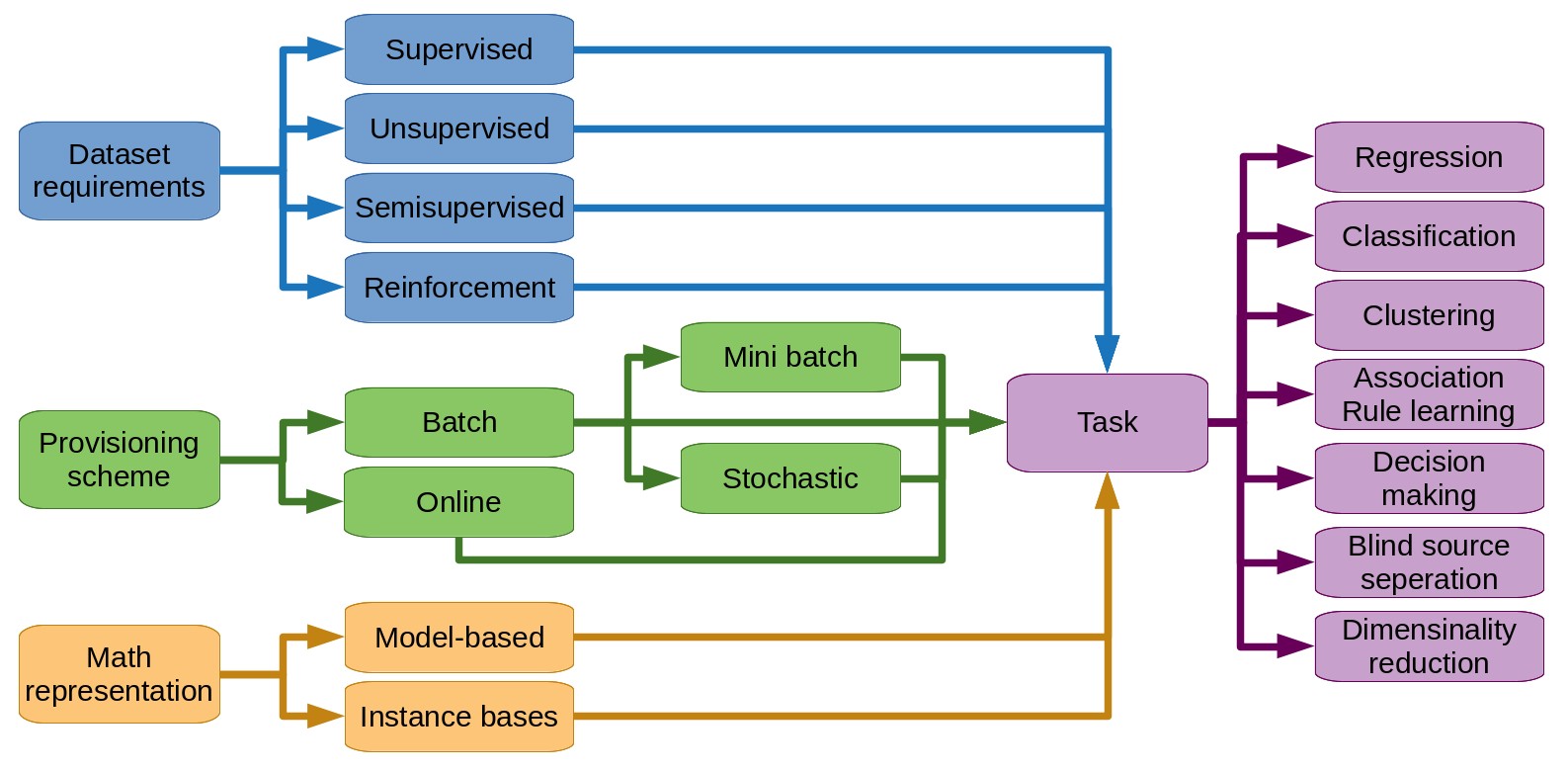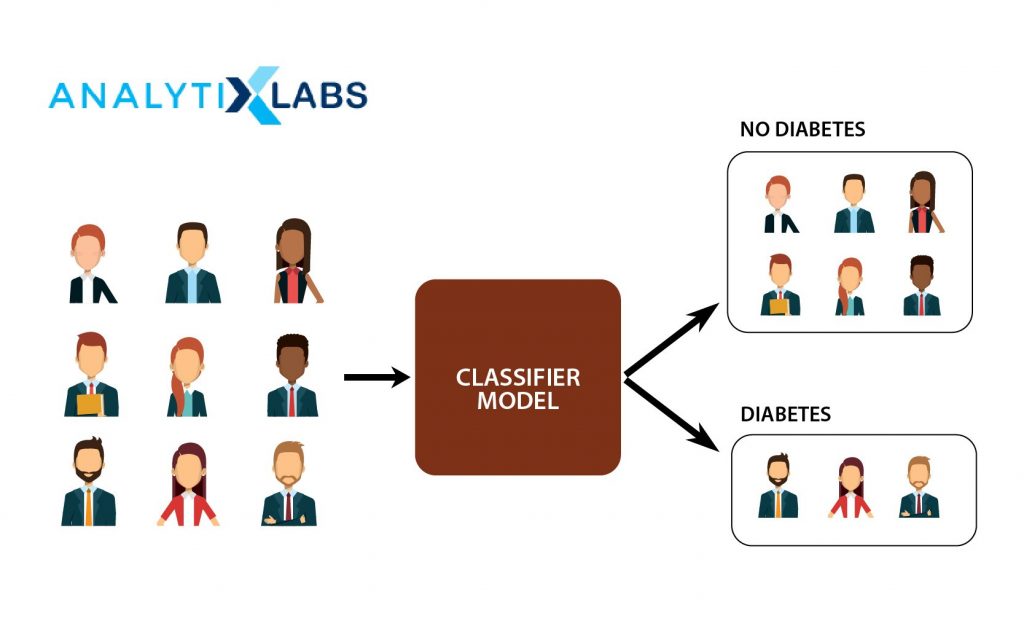
Classification in machine learning Types and methodologies
Abstract This NIST AI report develops a taxonomy of concepts and defines terminology in the field of adversarial machine learning (AML). The taxonomy is built on survey of the AML literature and is arranged in a conceptual hierarchy that includes key types of ML methods and lifecycle stage of attack, attacker goals and objectives, and attacker capabilities and knowledge of the learning process.

101 Machine Learning Algorithms for Data Science with Cheat Sheets
INTRODUCTION Shotgun metagenomic sequencing provides unprecedented insight into the critical functional roles of microorganisms in human health and the environment ( 1 ). One of the fundamental analysis steps in metagenomic data interpretation is to assign individual reads to their taxon-of-origin, which is termed taxonomic classification.
Machine Learning Taxonomy Download Scientific Diagram
86 Machine Learning (ML), by developing a taxonomy and terminology of Adversarial Machine 87 Learning (AML). Although AI also includes various knowledge-based systems, the data-driven 88 approach of ML introduces additional security challenges in training and testing (inference) 89 phases of system operations.

Taxonomy of Machine Learning Techniques Download Scientific Diagram
Machine learning (ML) is a promising alternative approach for read-based taxonomic classification that circumvents the requirement for a taxonomic tree, due to its ability to handle complex data-heavy prediction problems without a priori knowledge. Deep learning (DL) is a branch of ML that uses a many-layered (i.e., deep) structure.
Machine Learning taxonomy with the three main areas Supervised... Download Scientific Diagram
Regression There are four main categories of Machine Learning algorithms: supervised, unsupervised, semi-supervised, and reinforcement learning. Even though classification and regression are both from the category of supervised learning, they are not the same. The prediction task is a classification when the target variable is discrete.

Artificial Intelligence 5 A taxonomy of machine learning and deep learning algorithms
Machine learning methods for taxonomic profiling Several machine learning approaches have been proposed so far to deal with analysis encompassing the full range of metagenomic NGS data analysis. Among them, the most relevant have been Operational Taxonomic Unit-clustering (OTU-clustering), binning, taxonomic profiling, comparative metagenomics.

Machine Learning Taxonomy Tree. Download Scientific Diagram
Classification is a supervised machine learning process that involves predicting the class of given data points. Those classes can be targets, labels or categories. For example, a spam detection machine learning algorithm would aim to classify emails as either "spam" or "not spam."
.jpg)
How to Choose a Machine Learning Technique My Blog
Therefore, 16S Classifier is developed using a machine learning method, Random Forest, for faster and accurate taxonomic classification of short hypervariable regions of 16S rRNA sequence. It displayed precision values of up to 0.91 on training datasets and the precision values of up to 0.98 on the test dataset.
Machine Learning (ML) methodstaxonomy Download Scientific Diagram
The classification of living organisms can be done in many machine learning techniques. However, in this study, this is performed using convolutional neural networks. Moreover, a DNA encoding technique is incorporated in the algorithm to increase performance and avoid misclassifications. The algorithm proposed outperformed the state of the art.

Summarization of the classification approaches using machine learning Download Scientific Diagram
The taxonomy is built on surveying the AML literature and is arranged in a conceptual hierarchy that includes key types of ML methods and lifecycle stages of attack, attacker goals and objectives, and attacker capabilities and knowledge of the learning process.

Taxonomy of machine learning algorithms. Download Scientific Diagram
This taxonomy or way of organizing machine learning algorithms is useful because it forces you to think about the roles of the input data and the model preparation process and select one that is the most appropriate for your problem in order to get the best result. Let's take a look at three different learning styles in machine learning algorithms:
The taxonomy of machine learning interpretability. Download Scientific Diagram
In machine learning, classification refers to a predictive modeling problem where a class label is predicted for a given example of input data. Examples of classification problems include: Given an example, classify if it is spam or not. Given a handwritten character, classify it as one of the known characters.

Taxonomy of machine learning
Microbial communities play key roles in ocean ecosystems through regulation of biogeochemical processes such as carbon and nutrient cycling, food web dynamics, and gut microbiomes of invertebrates, fish, reptiles, and mammals. Assessments of marine microbial diversity are therefore critical to under.

Taxonomy of machine learning
One simple, straight-forward approach for taxonomic classification is flat classification. This is where you don't bother yourself with those pesky parent-categories, and just classify each example to its final, leaf-level label. Siamese cat is the same to a French Bulldog as it is to a Sphynx cat (also known as "that weird, no-fur one").

What Is Classification in Machine Learning? Classification Algorithms
Dec 14, 2023 0 188 Classification in Machine Learning: A Comprehensive Guide Machine learning, a subset of artificial intelligence, has undergone substantial progress, reshaping how computers comprehend information and arrive at decisions. Central to machine learning is the concept of classification, a fundamental technique with broad applications.

Taxonomy of Machine Learning Algorithms for the purpose of Localization Download Scientific
Deep learning (DL), a branch of machine learning (ML) and artificial intelligence (AI) is nowadays considered as a core technology of today's Fourth Industrial Revolution (4IR or Industry 4.0). Due to its learning capabilities from data, DL technology originated from artificial neural network (ANN), has become a hot topic in the context of computing, and is widely applied in various.